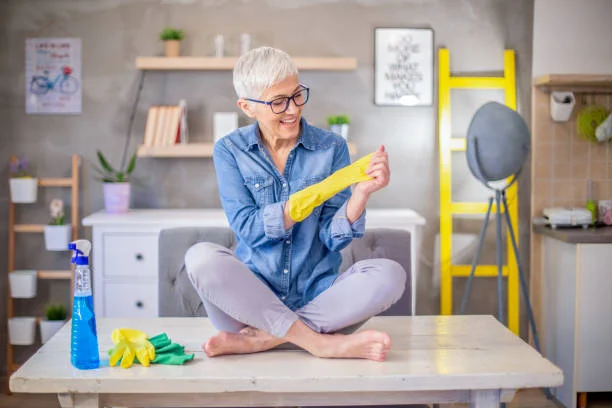Incontinence affects over 50% of seniors at some point, yet many families struggle to find the right supplies.
Managing accidents matters, but preserving dignity and comfort while preventing skin problems makes the biggest difference.
The right products transform constant worry into confident daily living.
This practical guide shares what actually helps in real homes, based on both personal experience and recommendations from home health nurses who work with seniors every day.
Adult Diapers That Actually Fit Well
Proper fit matters more than brand name or price. Ill-fitting products leak and cause skin irritation. The perfect product should feel secure without being too tight or too loose.
Finding the Right Size:
- Measure the waist and hip circumference at the widest point
- Check weight ranges on packaging (brands vary significantly)
- Try sample packs before buying in bulk
- Remember: men and women need different shaped products
Absorbency levels should match actual needs. Many caregivers make the mistake of always choosing maximum absorbency, but these tend to be bulkier and more expensive. For daytime with regular bathroom access, moderate absorbency often works better while providing more comfort.
Bed Protection You Can Count On
Quality bed protection prevents mattress damage while ensuring comfortable sleep:
| Protection Type | Best For | Considerations |
| Waterproof mattress covers | Every bed | Get breathable ones to prevent overheating |
| Washable bed pads | Targeted protection | Buy at least 4-6 to rotate during washing |
| Disposable underpads | Travel, temporary needs | More expensive long-term but convenient |
Most families need layers of protection. Start with a waterproof mattress encasement, add a washable pad, then sheets. This creates backup protection while minimizing middle-of-night bedding changes. Tuck washable pads under fitted sheets to prevent bunching and discomfort.
Vinyl-backed products trap heat. Look for breathable waterproof materials that allow airflow while still protecting bedding. Temperature regulation matters tremendously for good sleep and prevents uncomfortable sweating.
Skin Care Products for Sensitive Areas
Skin breakdown happens fast with incontinence. Proper skin care prevents painful rashes, infections, and even pressure sores:
- Avoid baby wipes (often contain alcohol and fragrance)
- Skip harsh soaps that strip natural oils
- Wash with pH-balanced cleansers made for adult skin
- Pat dry completely – never rub sensitive areas
- Apply moisture barrier cream at every change
Specialized no-rinse cleansers save time and reduce skin irritation for frequent cleanings. These cleanse without needing water or rinsing, which helps maintain skin integrity through multiple daily cleanings.
Chair and Furniture Covers That Work
Furniture protection doesn’t need to scream “medical equipment”:
- Waterproof seat covers in neutral colors blend with décor
- Quilted furniture protectors look like decorative throws
- Washable slipcovers protect entire chairs/sofas
- Vinyl covers work under decorative blankets for discreet protection
For seniors who spend hours in favorite chairs, reusable chair pads with wings that tuck under cushions stay in place better than basic pads. These protect the seat while remaining invisible from the front of the chair.
Cleaning Supplies That Get Rid of Odors
Controlling odors requires specific cleaning approaches:
- Enzymatic cleaners break down biological materials causing smells
- Avoid ammonia products which can actually intensify urine odors
- Baking soda neutralizes acids in urine that cause odors
- White vinegar (diluted 1:3 with water) works for spot cleaning
- Hydrogen peroxide removes stubborn stains from white fabrics
For men with urinary incontinence who prefer minimal bulk, a condom catheter kit offers an alternative to traditional absorbent products. These external catheters connect to collection bags and eliminate odor concerns while allowing more freedom of movement.
Laundry Solutions for Easy Washing
Laundry becomes a daily task with incontinence. Streamline the process:
- Pre-soak heavily soiled items before washing
- Wash in hottest water safe for fabric
- Add 1⁄2 cup white vinegar to rinse cycle
- Skip fabric softeners (trap odors and reduce absorbency)
- Dry completely – dampness breeds bacteria
Sunlight works wonders for stubborn odors that survive washing. Even brief exposure to direct sunlight kills odor-causing bacteria and naturally bleaches stains. Just 30 minutes outside makes a noticeable difference.
Comfort Items That Make Life Better
Small additions dramatically improve comfort and independence:
- Absorbent seat belt covers for car travel
- Waterproof backpacks for carrying supplies discreetly
- Washable purse-sized wetbags for used products
- Dark-colored towels that don’t show stains
- Handheld bidet attachments for better cleaning
Portable commodes beside the bed prevent overnight accidents. These don’t require plumbing – they have removable buckets emptied after use. For seniors with mobility challenges, this simple addition prevents many accidents.
Budget-Friendly Options That Don’t Sacrifice Quality
Quality incontinence care gets expensive. These strategies help manage costs:
- Check if insurance covers supplies (many do with doctor documentation)
- Buy washable products when possible for long-term savings
- Look for store brands – often made by name brands with different packaging
- Order online for bulk discounts and discreet delivery
- Ask about senior discounts or caregiver allowances
Many communities have incontinence supply closets through senior centers or faith organizations. These programs redistribute unopened packages when someone no longer needs them or purchased the wrong size.
For disposable products, subscription services often offer better prices than retail stores. These are delivered automatically on schedule, which prevents emergency trips to the store when supplies run low.






